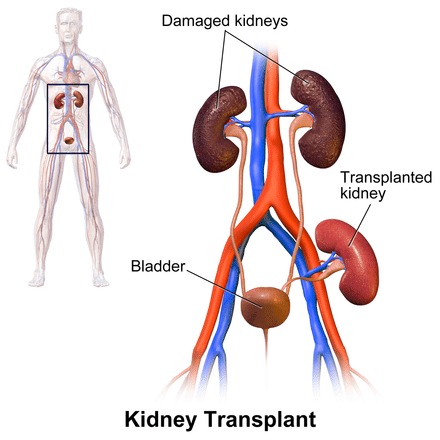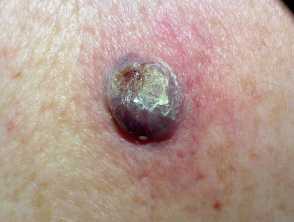Acupuncture Studied for Treatment of Chronic Hives
Alcohol Use Disorder: Stanford Study Documents Brain Recovery With Abstinence
AHA23: Successful Early Trial of Stem Cells Used To Re-Muscle Heart in Advanced Heart Failure
Kidney Transplant and Living Kidney Donation: Multicomponent Program to Improve Patient Access
- Patients with advanced chronic kidney disease (CKD) have the best chance for a longer and healthier life if they receive a kidney transplant.
- However, due to many barriers, many eligible patients today will never receive a kidney transplant.
- Advanced CKD care is provided by 26 chronic kidney disease (CKD) programs managed by a government funded provincial renal agency (the Ontario Renal Network)
- Together these 26 programs treat ~ 24,000 patients each year
- This care is provided by over 3400 nurses and 230 nephrologists
- To patients approaching the need for dialysis and those receiving dialysis
- Approximately half are transplant eligible
- ~ 600 kidney transplants done in Ontario each year across 6 transplant centres
- with approximately.30% of kidneys coming from living donors
STUDY FAILS TO FIND EVIDENCE THAT RED MEAT IS LINKED TO INFLAMMATION
Alzheimer’s Disease: APOE Status Must Be Interpreted in Light of Race, Ethnicity, Ancestry and Sex
McGill University Analysis Finds Early Life Adversity May Predispose to Exaggerated Emotional Responses as Adults
Updated Classification of Acute MI Based on Stages of Tissue Injury Severity
Crohn’s Disease: Lilly’s Mirikizumab Has Potential to Achieve Remission in Phase 3 Study
Ulcerative Colitis: FDA Approves Mirikizumab After Study Finds Long Lasting Response
Healthy Eating: Top 5 Best Diets to Follow


Face-to-Face: Study Finds Peak Viral Transmission Occurs Within 5 Seconds
Study Finds Enhanced Tai Ji Quan Practice Improved Memory and Walking in Older Adults
Lung Cancer: Stanford Risk-Based Model Reduces Screening Disparities
- Lung cancer is the leading cause of cancer death in the United States, killing about 127,000 people annually, but it can be treatable if detected early.
- Low-dose computed tomography, or CT scan, has been shown to significantly reduce the number of lung cancer deaths. But because the radiation delivered by the scans can be harmful (they use on average about 10 times the radiation of standard X-rays), only those people at relatively high risk for lung cancer should be screened. The two biggest risk factors for lung cancer are exposure to tobacco smoke and age. Current national guidelines that rely on age and smoking exposure to recommend people for lung cancer screening are disproportionally failing minority populations including African Americans, according to a new study led by researchers at Stanford Medicine.
- In 2021, the national guidelines by the U.S. Preventive Services Task Force (USPSTF) issued revised recommendation guidelines on lung cancer screening, lowering the start age from 55-year to 50-year and the smoking pack-year criterion from 30 to 20, compared to the 2013 USPSTF criteria. In comparison to the 2013 criteria, the new modifications have been shown to lessen racial disparities in screening eligibility between African Americans and Whites. However, potential disparities across other major racial groups in the U.S., such as Latinos, remains poorly examined.
- Meanwhile, risk prediction model assesses a person’s risk score of developing an illness, such as lung cancer.
CDC Reports Outcomes of Pediatric Multisystem Inflammatory Syndrome After COVID
Monash Study Highlights Association Between Triglycerides and Risk of Dementia
MedicalResearch.com Interview with: [caption id="attachment_60963" align="alignleft" width="133"] Dr. Zhen Zhou[/caption] Zhen Zhou, PhD Research Fellow, Chronic Disease & Ageing Monash University MedicalResearch.com: What is the background...
Mt. Sinai Study Finds PFAS Chemicals May Be Associated with Increased Risk of Thyroid Cancer
Baylor College of Medicine Scientists Find Potential Link Between Common Fungus and Alzheimer’s
ObesityWeek23: Study Suggests Persons with Obesity at Greatest Risk are Receiving Medications They Need
Emory/CDC Study Finds Combination Strategy Reduces Hospital Acquired Staph Infections
Long-Term Stable Wearable Patch Can Measure Important Biomarkers in Sweat
(more…)
Study Identifies Genes Linked to Nodular Melanoma
Outcomes of Prophylactic Salpingo-Oophorectomy After BRCA1/2 Breast Cancer Resection
UCLA Animal Study Finds It is Becoming Possible To Partially Restore Walking By Stimulating Nerve Fibers
Low Income and Minority Children Risk Impaired Cognitive Function from Environmental Hazards
MedicalResearch.com Interview with:
Dr. Devon Payne-Sturges, DrPH, MPH, MEngr
Associate Professor
Maryland Institute for Applied Environmental Health
School of Public Health
University of Maryland, College Park
MedicalResearch.com: What is the background for this study?
Response: My co-authors and I conducted this study to fill a knowledge gap and to inform the work of Project TENDR. No systematic or scoping review had examined both exposure disparities and the joint effects of combined exposures of environmental neurotoxicants and social disadvantage as they relate to disparities in neurodevelopmental outcomes specifically among children living in the U.S.
Our study is the first to summarize the evidence on 7 neurotoxicants that children in the U.S. are routinely exposed to and we examined both disparities in these exposures and disparities in the effects of those exposures on children’s brain development, cognition, and behavior by race, ethnicity, and economic status.
We reviewed over 200 independent studies spanning five decades from 1974 to 2022 on social disparities in exposure to 7 exemplar neurotoxic chemicals and pollutants, including chemical mixtures, and their relationship with disparities with neurodevelopmental outcomes among children in the U.S.
USPSTF: Blood Pressure Should Be Monitored Throughout Pregnancy






























